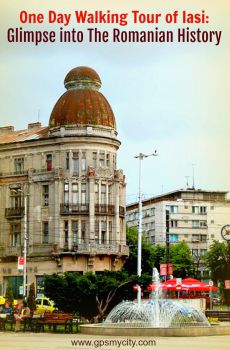
One Day Walking Tour of Iasi: Glimpse into The Romanian History
The university city of Iași is quite often, and deservedly so, referred to as the "cultulral capital" of Romania. Located in the eastern part of the country, it was indeed once capital of the vast Moldavia region around which the unified kingdom of Romania was eventually formed in the mid 19th century. It is therefore seemed only logical to me to start a day tour of Iasi – renowed for its cultural heritage – with its most noticeable landmark, The Palace of Culture.
(To visit the venues mentioned in this article, check out these Self-Guided Walking Tours in Iasi)
Image Courtesy of: Argenna
1. The Palace of Culture
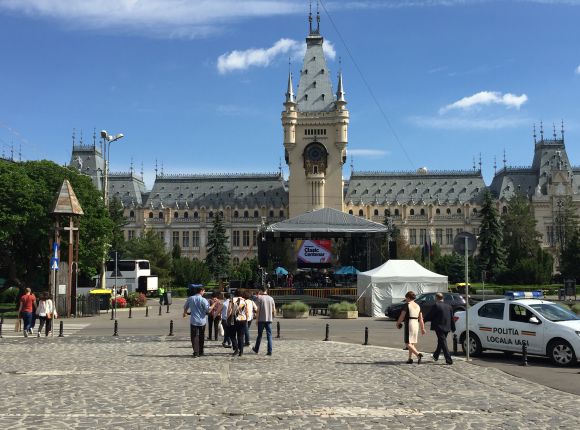
Symbol of the city and a listed national monument, this flamboyant neo-Gothic building is huge (299 rooms/36,000 m²) to put it fairly. I've noticed, the Romanians tend to go pretty big when it comes to "stressing the point" as is the case with The Palace of the Parliament (or People, as some of them call it) in Bucharest or The Palace of Culture in Iasi. The latter was built between 1906 and 1925 (the construction was somewhat halted by WWI) by prominent Romanian architect I.D. Berindei partially on the ruins of medieval princely court and a 19th century royal palace.
In front of the building stands a mounted statue of Stephan the Great, much respected local medieval ruler and saint. During World War II the palace served as barracks sheltering first the German and then the Soviet troops. During the communist era, all the interior frescoes featuring Romanian monarchs were painted over. Until 1955, the building had served as the County Court of Law. Today, the palace houses four museums (The Moldavian History Museum, The Moldavian Museum of Ethnography, The Museum of Art, and The Museum of Science and Technology), several art galleries and a huge public library.
In front of the building stands a mounted statue of Stephan the Great, much respected local medieval ruler and saint. During World War II the palace served as barracks sheltering first the German and then the Soviet troops. During the communist era, all the interior frescoes featuring Romanian monarchs were painted over. Until 1955, the building had served as the County Court of Law. Today, the palace houses four museums (The Moldavian History Museum, The Moldavian Museum of Ethnography, The Museum of Art, and The Museum of Science and Technology), several art galleries and a huge public library.
2. Palas Mall
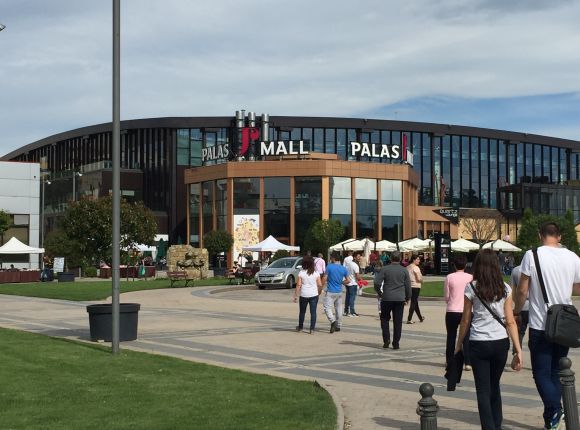
Things subtle and cultural don't seem far away from the earthly matters in Iasi, as is the case of the Palas Mall, spacious shopping center comprising a staggering 270,000+ square meters of commercial space practically a stone throw away from the Culture Palace. If you're in for a bit of shopping or craving a snack or something more substantial after digging deep on the cultural side, you should definitely not give it a miss!
3. Dosoftei House
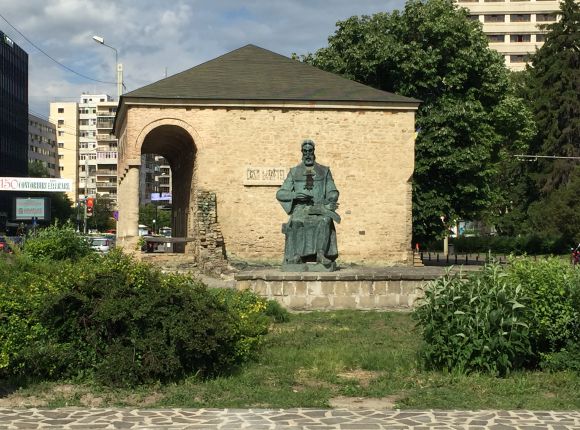
Afterwards, you may hit the road further and find, again, relatively closeby, a 17th century building – known as the Dosoftei House – named so after the local religious ruler Metropolitan Dosoftei. In 1679 this was the site of a print house (second in the region) and today is a home to The Romanian Literature Museum holding a rich collection of rare manuscripts.
4. Stefan cel Mare Boulevard
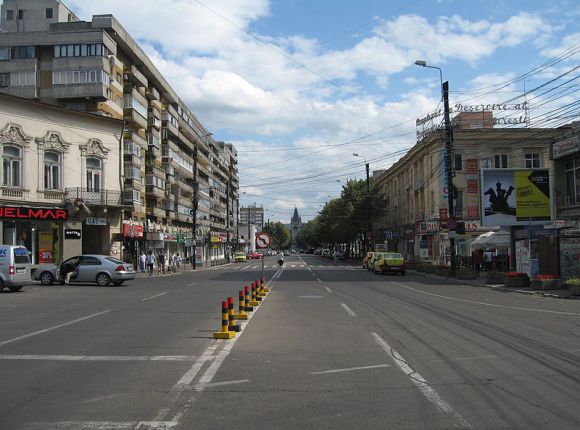
Image Courtesy of: Cezar Suceveanu
At this point, we find ourselves in the historic center of Iasi, at the outset of Stefan cel Mare Boulevard (previously known as Princely Street). Much to my delight, the entire Boulevard is a pedestrian zone. It has retained much of its historic cobble-stone appearance and continues to lure people in their thousands for a casual stroll.
5. Three Holy Hierarchs Monastery

A short walk ahead brings us, on the left-hand side, to the Monastery of the Three Holy Hierarchs. Built in 1637-1639 by Prince Vasile Lupu, this monastery is said to be patronized by Three Holy Hierarchs – St. Basil the Great, St. Gregory the Theologian and St. John Chrysostom – hence the name. It holds the remains of the much revered local saint Paraskeve and prominent noblemen: members of Vasile Lupu's royal family, Princes Dimitrie Cantemir and Alexandru Ioan Cuza.
6. Saint Mary's Cathedral
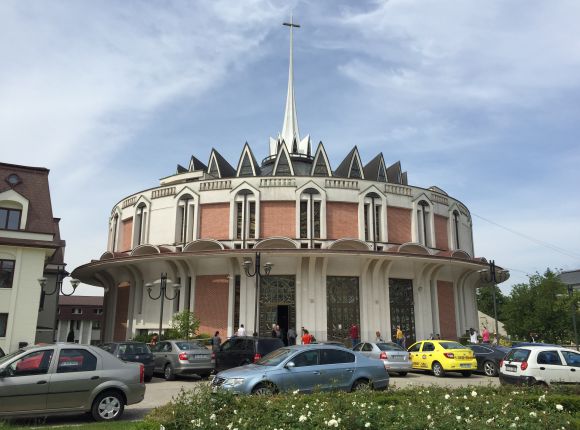
Just behind the monastery, there's another religious site – somewhat rare for predominantly Orthodox Romania – Catholic Saint Mary's Cathedral. Today, the cathedral is a modern-looking church of a rather modern, circular design with a central tower culminating in a cross.
7. Iași Metropolitan Cathedral

Image Courtesy of: Argenna
Flagship of Romania's Orthodox Christianity, the Iași Metropolitan Cathedral, is located further afield on Stefan cel Mare Boulevard. It was built on the site of two earlier churches, dating back to the 15th and 17th centuries, and was opened in April 1887 in the presence of King Carol I.
8. Roset-Roznovanu Palace (Iași City Hall)
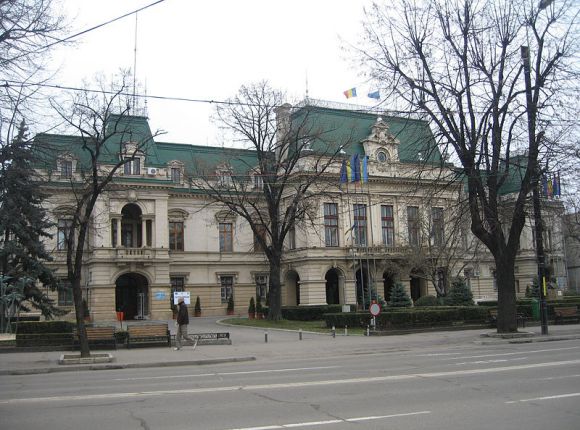.jpg)
Image Courtesy of: Cezar Suceveanu
Opposite the Cathedral, on the other side of the Boulevard stands the Roset-Roznovanu Palace, an 18th century building housing today the Iași City Hall. Back in the days of World War I, it was the seat of the Romanian government.
9. Iași National Theatre
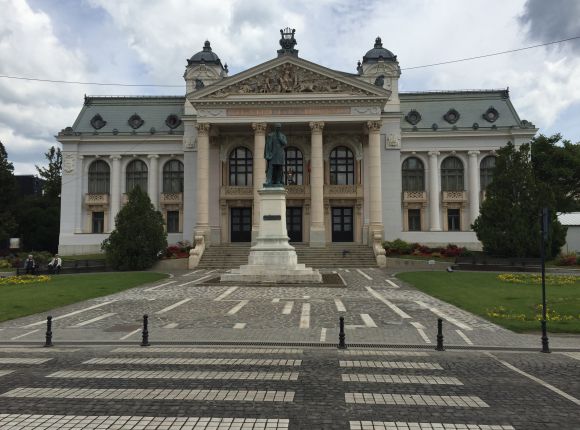
Now heading away from the Boulevard a few blocks, we approach The Iași National Theatre, oldest in Romania since May 1840. In February 1888, the original building completely burned down. The restoration took two years (1894-1896), and was run by Viennese architects, Fellner and Helmer. The result was a combination of Neoclassic exterior and lavishly decorated interior, featuring a mixture of Rococo and Baroque styles, earning the building the status of one of the most elegant in the country. Today, it is a listed National Historic Monument and also home to the Romanian National Iasi Opera.
10. Piața Unirii (Unification Square)
.jpg)
Image Courtesy of: Argenna
Heading back to Stefan cel Mare Boulevard, at its end we find Piața Unirii (Unification or Union Square), one of the key gathering spots of the local youth and, in some cases, even protesters, owing to whom it sees a lot of action on a regular basis. Siding the square are two hotels, Grand Traian Hotel and Unirea Hotel.
11. Muzeul Unirii (Museum of Unification)
.jpg)
In keeping with the “unirea” theme, not far from this place is the Muzeul Unirii (Museum of Unification) housed in a small, neoclassical palace of the early 19th century. Between 1859 and 1862, this was the royal residence of Alexandru Ioan Cuza, ruling prince who united the Romanian Principalities into a single state in 1859. Later on, during World War I, the palace also accommodated King Ferdinand during his retreat from Bucharest. The actual museum opened in 1959 marking the centenary of the Romanian state.
12. Alexandru Lapusneanu Street

Image Courtesy of: ElenaCozma
The very street on which the museum stands is called Alexandru Lapusneanu Street. Alongside other historic attractions, it houses one of the first movie theaters in Iasi, complete with a number of shops, bookstores, cafes, and even an antique store. On the far end of it is the campus of Ioan Cuza University.
Here we go! One walk, two streets covered, checking out pretty much with all the key historic attractions of Iasi. Not bad for a day tour! Time to stretch the weary feet and think of a new destination:)
Here we go! One walk, two streets covered, checking out pretty much with all the key historic attractions of Iasi. Not bad for a day tour! Time to stretch the weary feet and think of a new destination:)
Get GPSmyCity App for IOS or Android
You can read offline thousands of travel articles like this one in the "GPSmyCity: Walks in 1K+ Cities" app on Apple App Store or Google Play Store. The apps also offer city offline maps and GPS navigation to guide you to the places featured in the articles.
Walking Tours in Iasi, Romania
Create Your Own Walk in Iasi
Creating your own self-guided walk in Iasi is easy and fun. Choose the city attractions that you want to see and a walk route map will be created just for you. You can even set your hotel as the start point of the walk.
Iasi Introduction Walking Tour
The city of Iasi – second largest in Romania after the national capital Bucharest – is quite often, and deservedly so, referred to as the "cultural capital" of the country. Located in the vast eastern region of Moldova, around which Romania, as a unified kingdom, was formed in the mid 19th century, it was indeed once the capital of it. Renowned for its cultural heritage, Iasi is also... view more
Tour Duration: 2 Hour(s)
Travel Distance: 2.4 Km or 1.5 Miles
Tour Duration: 2 Hour(s)
Travel Distance: 2.4 Km or 1.5 Miles

